
table of contents
- Mosquito species
- origin
- protection
- Mosquito species
The mosquitoes, which are usually harmless and resident in the local latitudes, have unfortunately found company in recent years. Some mosquito species from the tropical regions now feel quite comfortable here too. Unfortunately, these mosquitoes are not entirely harmless and can transmit a wide variety of diseases. Because they can be infected with various pathogens, which they can then transmit to humans during the stinging process.
Mosquito species
Dangerous mosquito species
The different types of mosquitoes also have different areas of life. In the local latitudes there are now 50 different proven species, including some dangerous specimens. Not all types of mosquitoes bite. But there are now three other dangerous mosquito species that originally come from other continents, living in the local latitudes and Europe.
Above all, this includes:
- the yellow fever mosquito or, colloquially, the yellow mosquito
- Asian or Japanese bush mosquito
- the tiger mosquito

origin
The mosquitoes find their way to Germany because their eggs have a long lifespan. If you are placed on imported goods, such as very often car tires imported from Japan, then you get there they are on a direct route to Europe and thus also to the local regions and can then move freely here after hatching spread.

Experts say that if a mosquito has survived one or two winters here with us, then it stays and becomes at home. It is also known that more and more diseases can occur in the near future that are transmitted via a mosquito bite. According to experts, this will not happen immediately, but only in ten to fifteen years. By then, however, research will be ready to successfully take action against these viruses transmitted by the various mosquito species.

protection
Contrary to popular belief, light does not attract mosquitoes. Because there are mosquito species that are active at different times. So there are the day-active, the nocturnal and also the mosquitoes that are active at dusk. Therefore it seems that mosquitoes are attracted to it, especially at dusk, when the lights are switched on. However, all mosquitoes are active at dusk. In addition to the various mosquito repellants available on the market, there are also other ways in which mosquitoes are not attracted in the first place.
- do without sweet perfume
- take a shower before going outside
- this minimizes the odor of sweat
- it is better when the skin is cool
- therefore take a cold shower
- Mosquitoes are attracted to warm skin
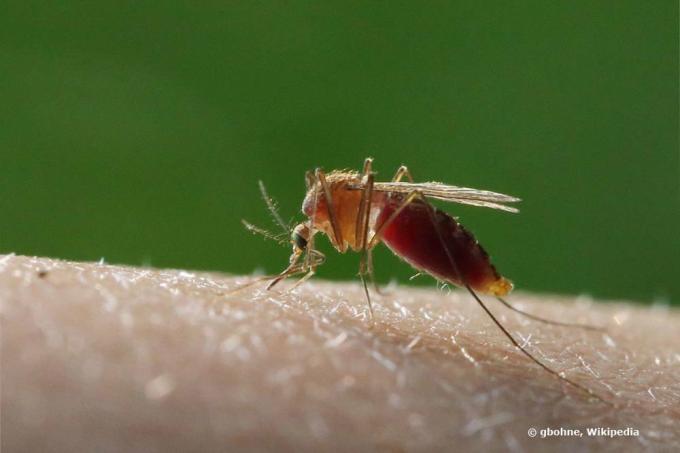
Mosquito species
Domestic mosquitoes
Anyone who is bitten by a local mosquito will notice this above all in an extremely itchy area around the bite. The mosquito injects a saliva secretion into the skin while it sticks, which is supposed to stop the blood from clotting. However, the body reacts to this by releasing histamine. The result is allergic itching, with reddening and swelling. Not all people react equally violently to a mosquito bite. For some it is red and swollen and itchy for days, others feel nothing after a few hours. Otherwise, the bites of the native mosquito are not harmful to health.

Asian tiger mosquito
One of the most dangerous mosquito species is the Asian tiger mosquito. It got its name from the thin black stripes that run across its body. This makes it easy to recognize and this is what sets it apart from other mosquito species. This mosquito species appeared for the first time in southern Europe ten years ago and has since made it at home here. In the meantime it has also found its way to northern Europe. The Asian tiger mosquito can transmit various diseases that it carries within itself while it bites.
These include:
- dengue fever
- the Chikungunya virus
- Yellow fever
- the Zika virus
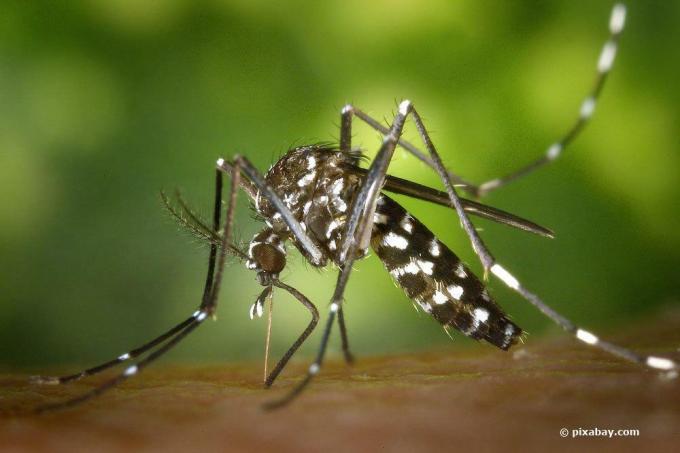
These diseases have already been proven to be transmitted by the Asian tiger mosquito, but in total there are around twenty pathogens from the tropics that this mosquito can transmit. But so far none of the mosquitoes found in Germany has been infected with one of these pathogens.
Countermeasures against Asian tiger mosquito
Balcony and garden owners in particular can do something to limit the population of the Asian tiger mosquito. The measures also help against other mosquito species, such as the not dangerous, but nevertheless annoying domestic mosquitoes. Because many mosquito species, not just dangerous, lay their eggs in calm and shallow waters. So watering cans, rain barrels or bird baths should be emptied and cleaned regularly. Since the eggs can survive in dry conditions for some time, cleaning after they have been emptied is also very important. The rain barrel can also be sealed well. It should be noted that even the smallest loopholes are used by the tiger mosquitoes. The following measures should also be taken.

- regular checking of drainage systems and rain gutters
- Regularly shed coasters from plants
- alternatively use vessels made of copper
- this material kills the larvae
- Protect interiors with fly screens
- Tiger mosquito is diurnal
- therefore above all protect entrances such as balcony or patio doors
- Set up egg-laying traps
- Use frogs or goldfish against larvae in the garden pond
Of course, these measures help against everyone and not only against dangerous mosquito species, whose habitat is mainly still, shallow waters.

Egyptian tiger mosquito / yellow fever mosquito
The yellow mosquito, Egyptian tiger mosquito or yellow fever mosquito should not be confused with the Asian tiger mosquito, but it transmits the same diseases and viruses. Above all and especially, however, the dangerous yellow fever is increasingly transmitted by this type of mosquito. In appearance, the mosquito is similar to its relative Asian, it also has dark stripes, similar to a tiger skin, that run over the body. However, the Egyptian tiger or yellow fever mosquito has an orange-brown belly, which distinguishes it from the Asian tiger mosquito.
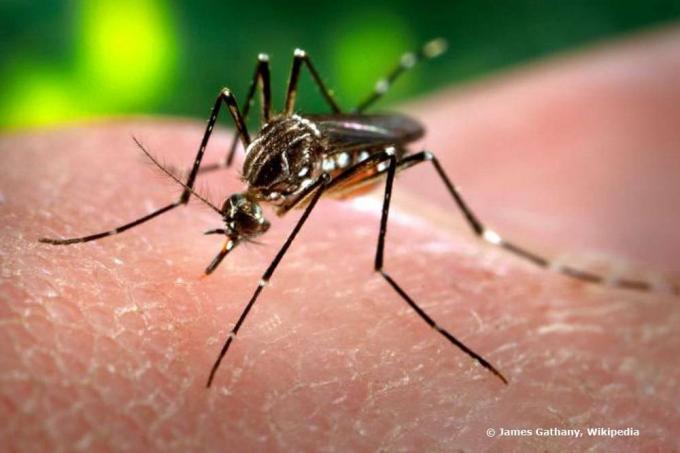
Asian bush mosquito
In addition, the Asian bush mosquito is also spreading more and more. Also of these specimens, which are to be classified under the heading of dangerous mosquito species, more and more have been found in the local latitudes in recent years. This mosquito species was first discovered in the south of Germany in 2008, but it is also spreading further and further into the north. Because unfortunately this species, classified as dangerous, gets along very well with the local weather conditions, especially in winter, and also survives colder winters. The diseases that this mosquito can transmit are also not to be underestimated.
- the West Nile virus, yellow fever
- other viruses that can cause encephalitis in humans
The Asian bush mosquito has conspicuous white-silvery horizontal stripes and a black-brown body, can therefore be easily recognized and also resembles the Asian tiger mosquito.
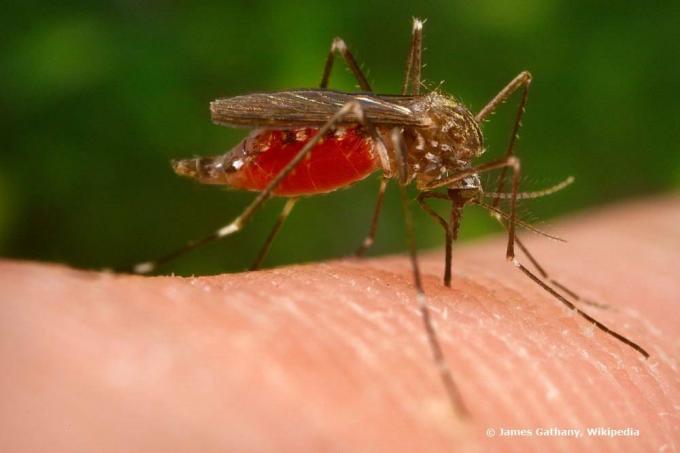
Sand flies
The small but very common sand flies have long been known in our latitudes. Not only do they sting because they target our blood, but they also leave pathogens behind. The mosquitoes are only about two millimeters tall and have a beige-colored body. However, the sand flies are already widespread in Germany, but the pathogens are mostly transmitted in southern European countries. Since sand flies often attack dogs too, it cannot be ruled out that the pathogens, especially leishmaniasis, are already being introduced into northern Europe. This happens through the dogs that go on vacation with their owners in the south, but also through dogs that leave the Southern countries are being adopted more recently and are already carrying the pathogen could. Other viruses that can be transmitted by sand flies are the following.
- Phlebotomus or Tuscany fever
- flu-like symptoms
- are the cause of meningitis
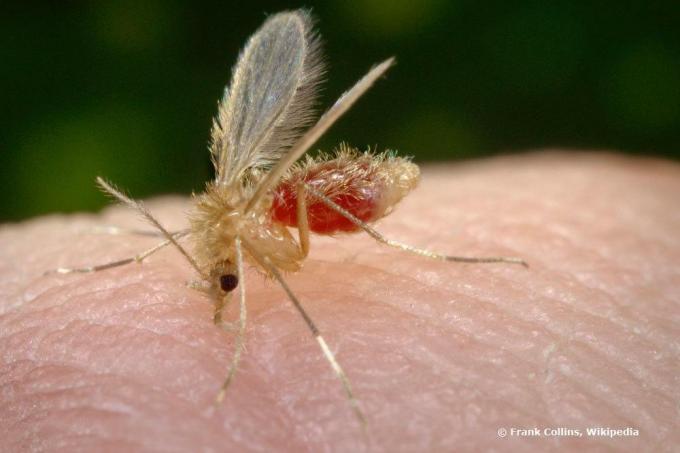
Black flies
Black flies don't bite and suck the blood, they bite to get to the blood. The black flies are only a few millimeters in size and are blue-gray to black in color. Basically, this type of mosquito is attacked outdoors during the day. Unlike mosquitoes, they do not enter the home or other closed rooms. They are also not carriers of disease or viruses. But the bite, which is a small wound, can swell and become infected. In addition, the mosquito's saliva can also have the following effects.
- has toxides that can get into the bloodstream
- allergic reactions may occur
- the saliva also contains substances that damage blood vessels and the heart
- can also affect the respiratory center
To protect yourself from black flies, meadows and wet areas should not be visited, especially in the morning and late afternoon. These mosquito species can be found in the vicinity of grazing animals, which the black flies also like to visit.

Bearded midges / midges
The midges or bearded gnats are close relatives of the black flies. At one to three millimeters, they are also very small and have spots on the wings. The midges are one of the nocturnal species of mosquito and are usually found near grazing animals and bodies of water, but they also invade closed spaces. They like to stab people right on the edge of their clothing. The sting can itch and in individual cases trigger an allergic reaction. However, nothing is known about the transmission of pathogens or viruses in this species.




